The term camel is derived via Latin and Greek (camelus and κάμηλος kamēlos respectively) from Hebrew or Phoenician gāmāl.[3][4]
"Camel" is also used more broadly to describe any of the seven camel-like mammals in the family Camelidae: the three true camels and the four New World camelids: the llama, alpaca, guanaco, and vicuña of South America.[5][6]
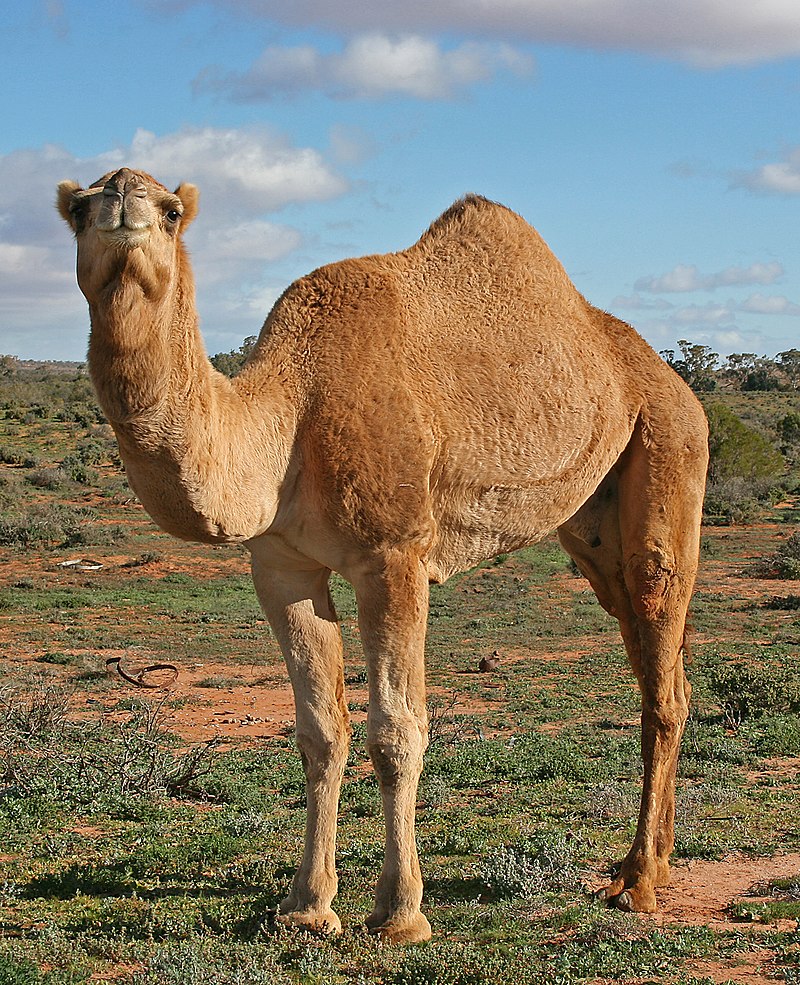
Biology

The average life expectancy of a camel is 40 to 50 years.[7][8] A full-grown adult camel stands 1.85 m (6 ft 1 in) at the shoulder and 2.15 m (7 ft 1 in) at the hump.[9] Camels can run at up to 65 km/h (40 mph) in short bursts and sustain speeds of up to 40 km/h (25 mph).[10] Bactrian camels weigh 300 to 1,000 kg (660 to 2,200 lb) and dromedaries 300 to 600 kg (660 to 1,320 lb).
The male dromedary camel has in its throat an organ called a dulla, a large, inflatable sac he extrudes from his mouth when in rut to assert dominance and attract females. It resembles a long, swollen, pink tongue hanging out of the side of its mouth.[11] Camels mate by having both male and female sitting on the ground, with the male mounting from behind.[12] The male usually ejaculates three or four times within a single mating session.[13] Camelids are the only ungulates to mate in a sitting position.[14]
Ecological and behavioral adaptations
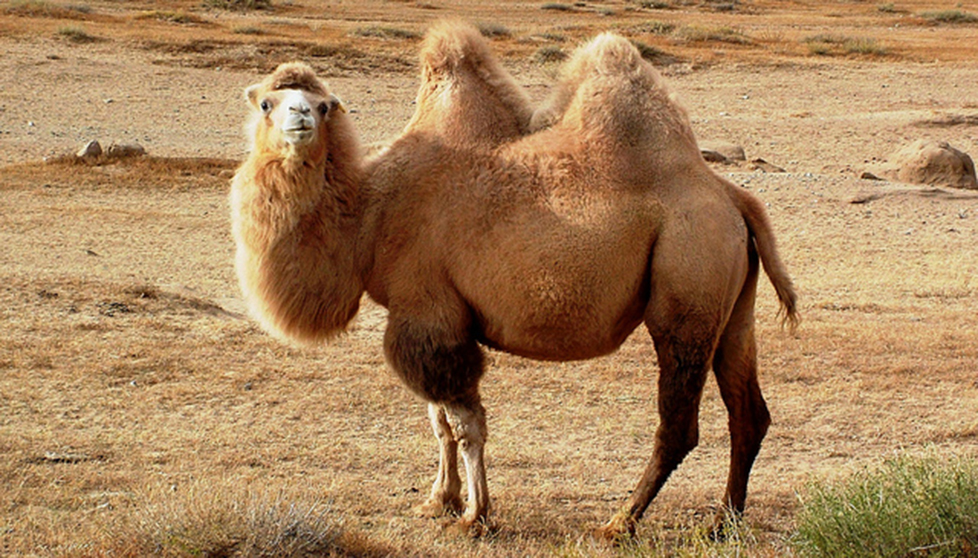
Camels do not directly store water in their humps as was once commonly believed. The humps are actually reservoirs of fatty tissue: concentrating body fat in their humps minimizes the insulating effect fat would have if distributed over the rest of their bodies, helping camels survive in hot climates.[15][16] When this tissue is metabolized, it yields more than one gram of water for every gram of fat processed. This fat metabolization, while releasing energy, causes water to evaporate from the lungs during respiration (as oxygen is required for the metabolic process): overall, there is a net decrease in water.[17][18]
A camel's thick coat is one of its many adaptations that aid it in desert-like conditions.
Camels are able to withstand changes in body temperature and water consumption that would kill most other animals. Their temperature ranges from 34 °C (93 °F) at dawn and steadily increases to 40 °C (104 °F) by sunset, before they cool off at night again.[16] Maintaining the brain temperature within certain limits is critical for animals; to assist this, camels have a rete mirabile, a complex of arteries and veins lying very close to each other which utilizes countercurrent blood flow to cool blood flowing to the brain.[23] Camels rarely sweat, even when ambient temperatures reach 49 °C (120 °F).[7] Any sweat that does occur evaporates at the skin level rather than at the surface of their coat; the heat of vaporization therefore comes from body heat rather than ambient heat. Camels can withstand losing 25% of their body weight to sweating, whereas most other mammals can withstand only about 12–14% dehydration before cardiac failure results from circulatory disturbance.[22]
When the camel exhales, water vapor becomes trapped in their nostrils and is reabsorbed into the body as a means to conserve water.[24] Camels eating green herbage can ingest sufficient moisture in milder conditions to maintain their bodies' hydrated state without the need for drinking.[25]
Domesticated camel calves lying in sternal recumbency, a position that aids heat loss
Camels' mouths have a thick leathery lining, allowing them to chew thorny desert plants. Long eyelashes and ear hairs, together with nostrils that can close, form a barrier against sand. If sand gets lodged in their eyes, they can dislodge it using their transparent third eyelid. The camels' gait and widened feet help them move without sinking into the sand.[27][29][30]
The kidneys and intestines of a camel are very efficient at reabsorbing water. Camel urine comes out as a thick syrup, and camel feces are so dry that they do not require drying when the Bedouins use them to fuel fires.[31][32][33][34]
Camels' immune system differs from those of other mammals. Normally, the Y-shaped antibody molecules consist of two heavy (or long) chains along the length of the Y, and two light (or short) chains at each tip of the Y. Camels, in addition to these, also have antibodies made of only two heavy chains, a trait that makes them smaller and more durable. These "heavy-chain-only" antibodies, discovered in 1993, are thought to have developed 50 million years ago, after camelids split from ruminants and pigs.[35]
Genetics
Domesticated camels at the Pyramids of Giza, Egypt

The hybrid camel, a hybrid between Bactrian and dromedary camels, has one hump, though it has an indentation 4–12 cm (1.6–4.7 in) deep that divides the front from the back. The hybrid is 2.15 m (7 ft 1 in) at the shoulder and 2.32 m (7 ft 7 in) tall at the hump. It weighs an average of 650 kg (1,430 lb) and can carry around 400 to 450 kg (880 to 990 lb), which is more than either the dromedary or Bactrian can.[43]
According to molecular data, the New World and Old World camelids diverged 11 million years ago.[44] In spite of this, these species can still hybridize and produce fertile offspring.[45] The cama is a camel–llama hybrid bred by scientists who wanted to see how closely related the parent species were.[46] Scientists collected semen from a camel via an artificial vagina and inseminated a llama after stimulating ovulation with gonadotrophin injections.[47] The cama has ears halfway between the length of camel and llama ears, no hump, longer legs than the llama, and partially cloven hooves.[48][49] According to cama breeder Lulu Skidmore, cama have "the fleece of the llamas" and "the strength and patience of the camel".[47] Like the mule, camas are sterile, despite both parents having the same number of chromosomes.[47]
Evolution
Antelope-like ancient camel, Stenomylus
The direct ancestor of all modern camels, Procamelus, existed in the upper Miocene and lower Pliocene.[55] Around 3–5 million years ago, the North American Camelidae spread to South America via the Isthmus of Panama, where they gave rise to guanacos and related animals, and to Asia via the Bering land bridge.[13][50][51] Surprising finds of fossil Paracamelus on Ellesmere Island beginning in 2006 in the high Canadian Arctic indicate the dromedary is descended from a larger, boreal browser whose hump may have evolved as an adaptation in a cold climate.[56][57] This creature is estimated to have stood around nine feet tall.[58]
The last camel native to North America was Camelops hesternus, which vanished along with horses, short-faced bears, mammoths and mastodons, ground sloths, sabertooth cats, and many other megafauna, coinciding with the migration of humans from Asia.[59][60]
Domestication
Camels are used as draft animals in Pakistan.
A camel with its rider playing kettledrums in the Mughal Empire
Dromedaries may have first been domesticated by humans in Somalia and southern Arabia, around 3,000 BC, the Bactrian in central Asia around 2,500 BC,[13][62][63][64] as at Shar-i Sokhta (also known as the Burnt City), Iran.[65]
Discussions concerning camel domestication in Mesopotamia are often related to mentions of camels in the Hebrew Bible. The International Standard Bible Encyclopedia: E-J for instance mentions that "In accord with patriarchal traditions, cylinder seals from Middle Bronze Age Mesopotamia showed riders seated upon camels."[66][67]
Martin Heide's 2010 work on the domestication of the camel tentatively concludes that the bactrian camel was domesticated by at least the middle of the third millennium somewhere east of the Zagros Mountains, then moving into Mesopotamia, and suggests that mentions of camels "in the patriarchal narratives may refer, at least in some places, to the Bactrian camel." while noting that the camel is not mentioned in relationship to Canaan.[68]
Recent excavations in the Timna Valley by Lidar Sapir-Hen and Erez Ben-Yosef discovered what may be the earliest domestic camel bones found in Israel or even outside the Arabian peninsula, dating to around 930 BC. This garnered considerable media coverage as it was described as evidence that the stories of Abraham, Joseph, Jacob and Esau were written after this time.[69][70]
The existence of camels in Mesopotamia but not in Israel is not a new idea. According to an article in Time Magazine, the historian Richard Bulliet wrote in his 1975 book "The Camel and the Wheel" that "the occasional mention of camels in patriarchal narratives does not mean that the domestic camels were common in the Holy Land at that period."[71] The archaeologist William F. Albright writing even earlier saw camels in the Bible as an anachronism.[72] The official report by Sapir-Hen and Ben-Joseph notes that "The introduction of the dromedary camel (Camelus dromedarius) as a pack animal to the southern Levant signifies a crucial juncture in the history of the region; it substantially facilitated trade across the vast deserts of Arabia, promoting both economic and social change (e.g., Kohler 1984; Borowski 1998: 112-116; Jasmin 2005). This, together with the depiction of camels in the Patriarchal narrative, has generated extensive discussion regarding the date of the earliest domestic camel in the southern Levant (and beyond) (e.g., Albright 1949: 207; Epstein 1971: 558-584; Bulliet 1975; Zarins 1989; Köhler-Rollefson 1993; Uerpmann and Uerpmann 2002; Jasmin 2005; 2006; Heide 2010; Rosen and Saidel 2010; Grigson 2012). Most scholars today agree that the dromedary was exploited as a pack animal sometime in the early Iron Age (not before the 12th century BCE)" and concludes that "Current data from copper smelting sites of the Aravah Valley enable us to pinpoint the introduction of domestic camels to the southern Levant more precisely based on stratigraphic contexts associated with an extensive suite of radiocarbon dates. The data indicate that this event occurred not earlier than the last third of the 10th century BCE and most probably during this time. The coincidence of this event with a major reorganization of the copper industry of the region—attributed to the results of the campaign of Pharaoh Shoshenq I—raises the possibility that the two were connected, and that camels were introduced as part of the efforts to improve efficiency by facilitating trade."[70]
Military uses
Main article: Camel cavalry
British Imperial Camel Corps Brigade in Egypt
Camel cavalries have been used in wars throughout Africa, the Middle East, and into modern-day Border Security Force of India (though as of July 2012, the BSF has planned the replacement of camels with ATVs). The first use of camel cavalries was in the Battle of Qarqar in 853 BC.[74][75][76] Armies have also used camels as freight animals instead of horses and mules.[77][78]
In the East Roman Empire, the Romans used auxiliary forces known as dromedarii, whom they recruited in desert provinces.[79][80] The camels were used mostly in combat because of their ability to scare off horses at close ranges (horses are afraid of the camels' scent),[14] a quality famously employed by the Achaemenid Persians when fighting Lydia in the Battle of Thymbra.[43][81][82]
19th and 20th centuries
- The United States Army established the U.S. Camel Corps, which was stationed in California in the late 19th century.[14] One may still see stables at the Benicia Arsenal in Benicia, California, where they nowadays serve as the Benicia Historical Museum.[83] Though the experimental use of camels was seen as a success (John B. Floyd, Secretary of War in 1858, recommended that funds be allocated towards obtaining a thousand more camels), the outbreak of the American Civil War saw the end of the Camel Corps: Texas became part of the Confederacy, and most of the camels were left to wander away into the desert.[78]
- France created a méhariste camel corps in 1912 as part of the Armée d'Afrique in the Sahara[84] in order to exercise greater control over the camel-riding Tuareg and Arab insurgents, as previous efforts to defeat them on foot had failed.[85] The camel-mounted units remained in service until the end of French rule over Algeria in 1962.[86]
- In 1916, the British created the Imperial Camel Corps. It was originally used to fight the Senussi, but was later used in the Sinai and Palestine Campaign in World War I. The Imperial Camel Corps comprised infantrymen mounted on camels for movement across desert, though they dismounted at battle sites and fought on foot. After July 1918, the Corps began to become run down, receiving no new reinforcements, and was formally disbanded in 1919.[87]
- In World War I, the British Army also created the Egyptian Camel Transport Corps, which consisted of a group of Egyptian camel drivers and their camels. The Corps supported British war operations in Sinai, Palestine, and Syria by transporting supplies to the troops.[88][89][90]
- The Somaliland Camel Corps was created by colonial authorities in British Somaliland in 1912; it was disbanded in 1944.[91]
- Bactrian camels were used by Romanian forces during World War II in the Caucasian region.[92]
- The Bikaner Camel Corps of British India fought alongside the British Indian Army in World Wars I and II.[93]
- The Tropas Nómadas (Nomad Troops) were an auxiliary regiment of Sahrawi tribesmen serving in the colonial army in Spanish Sahara (today Western Sahara). Operational from the 1930s until the end of the Spanish presence in the territory in 1975, the Tropas Nómadas were equipped with small arms and led by Spanish officers. The unit guarded outposts and sometimes conducted patrols on camelback.[94][95]
Food uses
Dairy
Camel calf feeding on its mother's milk
Camel milk cannot be made into butter by the traditional churning method. It can be made if it is soured first, churned, and a clarifying agent is then added.[14] Until recently, camel milk could not be made into camel cheese because rennet was unable to coagulate the milk proteins to allow the collection of curds.[101] Developing less wasteful uses of the milk, the FAO commissioned Professor J.P. Ramet of the École Nationale Supérieure d'Agronomie et des Industries Alimentaires, who was able to produce curdling by the addition of calcium phosphate and vegetable rennet.[99] The cheese produced from this process has low levels of cholesterol and is easy to digest, even for the lactose intolerant.[102][103] The sale of camel cheese is limited owing to the small output of the few dairies producing camel cheese and the absence of camel cheese in local (West African) markets.[99] Cheese imports from countries that traditionally breed camels are difficult to obtain due to restrictions on dairy imports from these regions.[104]
Additionally, camel milk has been made into ice cream in a Netherlands camel farm.[105]
Meat
A Somali camel meat and rice dish.
Camel meat pulao, from Pakistan.
Camel meat has been eaten for centuries. It has been recorded by ancient Greek writers as an available dish at banquets in ancient Persia, usually roasted whole.[112] The ancient Roman emperor Heliogabalus enjoyed camel's heel.[31] Camel meat is still eaten in certain regions, including Eritrea, Somalia, Djibouti, Saudi Arabia, Egypt, Syria, Libya, Sudan, Ethiopia, Kazakhstan, and other arid regions where alternative forms of protein may be limited or where camel meat has had a long cultural history.[13][31][106] Camel blood is also consumable, as is the case among pastoralists in northern Kenya, where camel blood is drunk with milk and acts as a key source of iron, vitamin D, salts and minerals.[13][106][113] Camel meat is also occasionally found in Australian cuisine: for example, a camel lasagna is available in Alice Springs.[112][113]
A 2005 report issued jointly by the Saudi Ministry of Health and the United States Centers for Disease Control and Prevention details cases of human bubonic plague resulting from the ingestion of raw camel liver.[114]
Religion
Islam
Camel meat is halal for Muslims. However, according to some Islamic schools of thought, a state of impurity is brought on by the consumption of it. Consequently, these schools hold that Muslims must perform wudhu (ablution) before the next time they pray after eating camel meat.[115]Also, some Islamic schools of thought consider it haraam for a Muslim to perform salat in places where camels lie, as it is said to be a dwelling place of shaytan.[115]
According to Suni ahadith collected by Bukhari and Muslim, Muhammad ordered a certain group of people to drink camel milk and urine as a medicine.[116][117][118][119][120][121] However, according to Abū Ḥanīfa, the drinking of camel urine, while not forbidden (ḥaram), is disliked (makrūh) in Islam.[122]
Camel urine is sold as traditional medicine in shops in Saudi Arabia.[123][124][125][126][127][128] The Sunni scholar Muhammad Al-Munajjid's IslamQA.info recommends camel urine as beneficial to curing certain diseases and to human health and cited Ahadith and scientific studies as justification.[129][130][131][132] King Abdulaziz University researcher Dr. Faten Abdel-Rajman Khorshid has claimed that cancer and other diseases could be treated with camel urine as recommended by the Prophet.[133][134][135][136][137][138] It is believed to combat cancer by King Abdulaziz University staff and serves as medicine and shampoo.[139] The United Arab Emirates "Arab Science and Technology Foundation" reported that cancer could be treated with camel urine.[140][141] Camel urine was also prescribed as a treatment by Zaghloul El-Naggar, a religious scholar.[142][143] Camel urine is the only urine which is permitted to be drunk according to the Hanbali madhhab of Sunni Islam.[144] The World Health Organization said that camel urine consumption may be a factor in the spread of the MERS virus in Saudi Arabia.[145][146][147][148][149][150][151] The Gulf Times writer Ahmad al-Sayyed wrote that various afflictions are dealt with camel urine by people.[152] Camel urine was used to clean hair by Bedouin.[153] Dandruff, scalp ailments, hair, sores, and wounds were recommended to be treated with camel urine by Ibn Sina.[154] Arab American University Professor of Cell Biology and Immunology Bashar Saad (PhD) along with Omar Said (PhD) wrote that medicinal use of camel urine is approved of and promoted by Islam since it was recommended by the prophet.[155] A test on mice found that cytotoxic effects similar to cyclophosphamide were induced on bone marrow by camel urine.[156] Besides for consumption as a medicinal drink, camel urine is believed to help treat hair.[157][158] Bites from insects were warded off with camel urine, which also served as a shampoo.[159] Camel urine is also used to help treat asthma, infections, treat hair, sores, hair growth and boost libido.[160][161]
Several Sunni Ahadith mention camel urine:[162][163][164][165][166]
Some Shia criticized Wahhabis for camel urine treatment.[175][176] Shia scholars also recommend the medicinal use of camel urine.[177][178] Shia Hadith on Imam Ja'far al-Sadiq reported that shortness of breath (asthma) was treated with camel urine.[179][180][181] Shia Marja Ayatollah Sistani said that for medicinal purposes only, sheep, cow, and camel urine can be drunk.[182]
Judaism
See also: Food and drink prohibitions
According to Jewish tradition, camel meat and milk are not kosher.[183] Camels possess only one of the two kosher criteria; although they chew their cud, they do not possess cloven hooves:[184]Nevertheless these shall ye not eat of them that only chew the cud, or of them that only part the hoof: the camel, because he cheweth the cud but parteth not the hoof, he is unclean unto you.
— Leviticus 11:4[185]
Distribution and numbers
Camels in the Guelta d'Archei, in northeastern Chad
Commercial camel market headcount in 2003
The largest population of feral camels is in Australia. There are around 700,000 feral dromedary camels in central parts of Australia, descended from those introduced as a method of transport in the 19th and early 20th centuries.[113][186][192] This population is growing about 8% per year.[193] Representatives of the Australian government have culled more than 100,000 of the animals in part because the camels use too much of the limited resources needed by sheep farmers.[194]
A small population of introduced camels, dromedaries and Bactrians, wandered through Southwest United States after having been imported in the 1800s as part of the U.S. Camel Corps experiment. When the project ended, they were used as draft animals in mines and escaped or were released. Twenty-five U.S. camels were bought and imported to Canada during the Cariboo Gold Rush.[78]
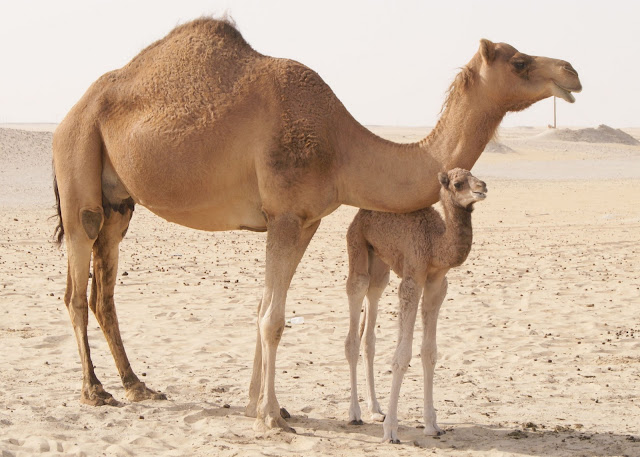
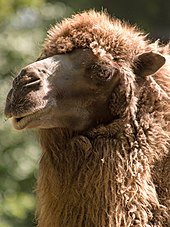



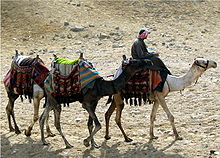
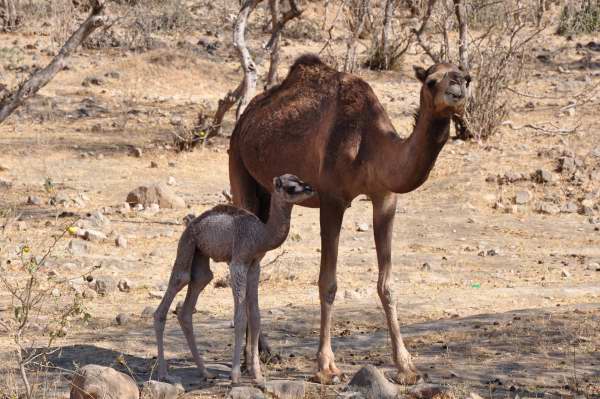
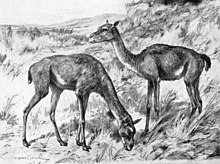
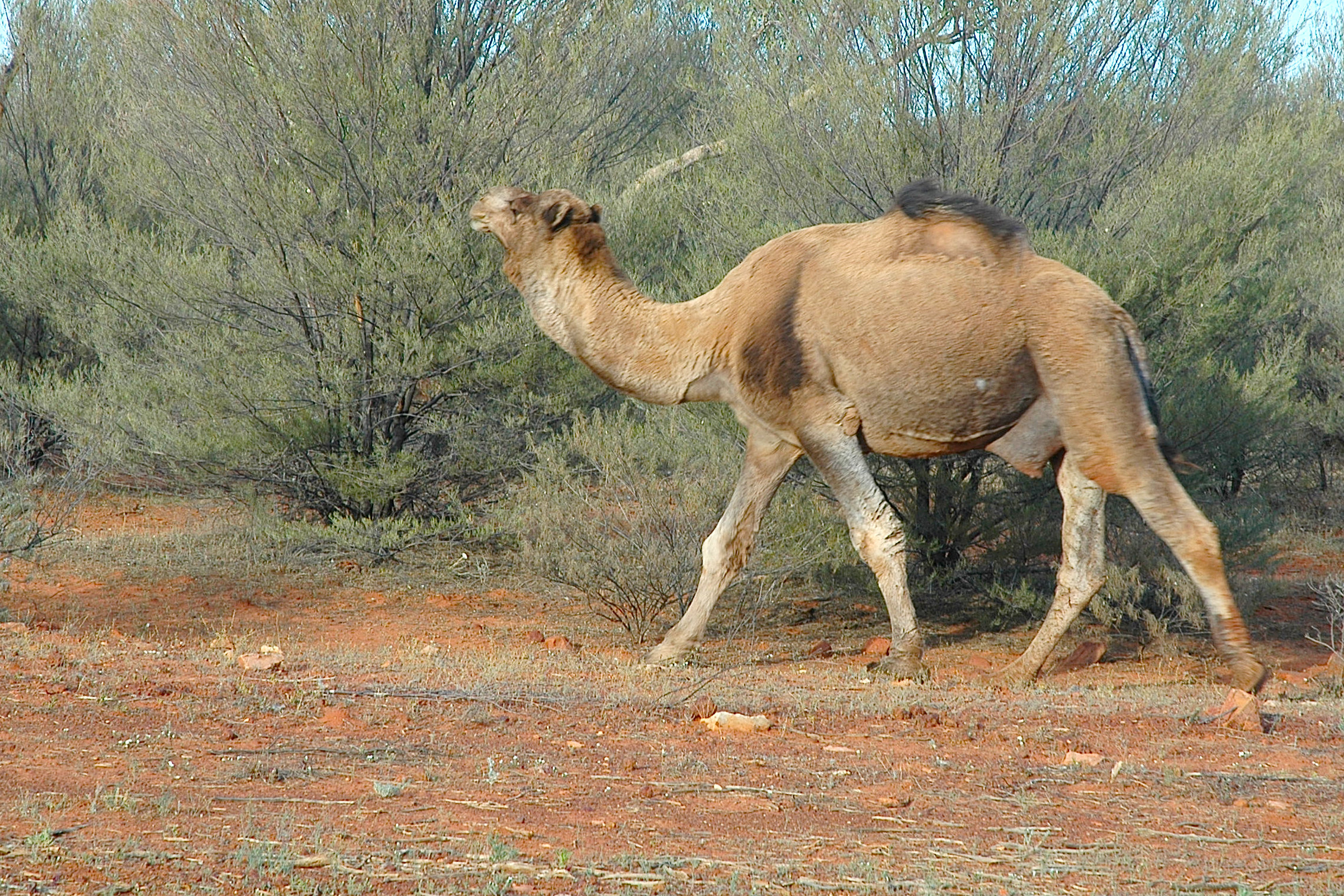
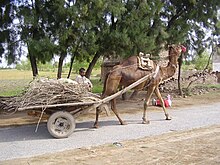
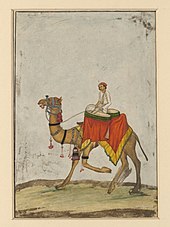
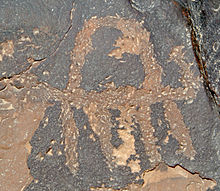


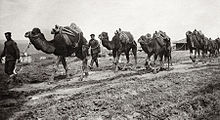
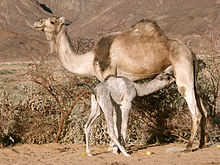
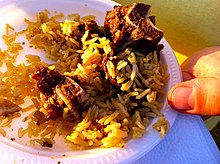



No comments:
Post a Comment
Note: Only a member of this blog may post a comment.